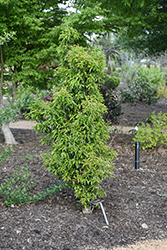It's all about ...
plants

Height: 30 feet
Spread: 10 feet
Sunlight:
![]()
![]()
Hardiness Zone: 8a
Other Names: Buergeri Holly, Asian Holly
Description:
A unique evergreen shrub with an upright and narrow habit of growth, superb choice for small-scale articulation in the garden; oblong, leathery leaves are toothed but not spiny; produces abundant small red berries; heat tolerant
Ornamental Features
Shii-Mochi Japanese Holly is primarily grown for its highly ornamental fruit. It features an abundance of magnificent red berries from mid fall to mid winter. It has attractive green evergreen foliage. The glossy narrow leaves are highly ornamental and remain green throughout the winter.
Landscape Attributes
Shii-Mochi Japanese Holly is a dense multi-stemmed evergreen tree with a narrowly upright and columnar growth habit. Its relatively fine texture sets it apart from other landscape plants with less refined foliage.
This tree will require occasional maintenance and upkeep, and is best pruned in late winter once the threat of extreme cold has passed. It is a good choice for attracting birds to your yard. Gardeners should be aware of the following characteristic(s) that may warrant special consideration;
- Insects
- Disease
Shii-Mochi Japanese Holly is recommended for the following landscape applications;
- Vertical Accent
- Hedges/Screening
- General Garden Use
Planting & Growing
Shii-Mochi Japanese Holly will grow to be about 30 feet tall at maturity, with a spread of 10 feet. It has a low canopy, and is suitable for planting under power lines. It grows at a fast rate, and under ideal conditions can be expected to live for 40 years or more. This variety requires a different selection of the same species growing nearby in order to set fruit.
This tree does best in full sun to partial shade. It prefers to grow in average to moist conditions, and shouldn't be allowed to dry out. It is very fussy about its soil conditions and must have rich, acidic soils to ensure success, and is subject to chlorosis (yellowing) of the foliage in alkaline soils. It is highly tolerant of urban pollution and will even thrive in inner city environments. Consider applying a thick mulch around the root zone in winter to protect it in exposed locations or colder microclimates. This species is not originally from North America.
This plant is not reliably hardy in our region, and certain restrictions may apply; contact the store for more information.
